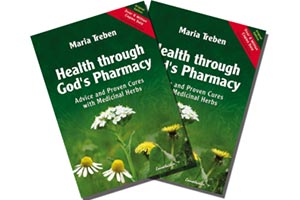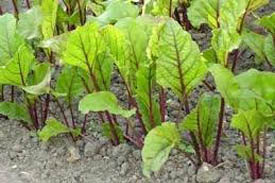Starting Spring Time Seeds
The Spring Equinox is approaching; small daffodils, dandelions, quince, and fruit buds will herald the approach of “Garden Fever” time for NRV residents. The urge to start planting seeds for your garden becomes overpowering. You wander amongst the Garden Centers buying and loading your automobile with everything imaginable to fulfill this primal call of Natures re-awakening.
Wal*Mart’ and other major garden centers are stocking their shelves for you, anticipating a booming year in garden supplies, as many, now hurt by the economy down turn are returning back2theland, and starting new vegetable gardens. For the Dear Reader who is just undertaking this adventure into food production we will start with the most basic of seed starting and gradually expand to the more advanced. We will cover greenhouse growing later in the year that is more complex, and in its self a detailed study.
Garden catalogs and the Garden centers are offering this year a pre packaged seed starter tray (also called a ‘flat’), including a starter medium for your seeds, a humidity dome and of course recommended directions. A fifty pack can be had for less than nine dollars with the expanding plug type, which I recommend.
All you need now is sunshine, water and a temperature of at least 70’F. With perhaps a windowsill, a counter top, or even a dark warm basement. Of course if it is dark you will need to have light. Let us start with a low light environment.
You will need two ‘saw Horses’ to support a 4′ X 8′ ” thick plywood sheet, or maybe Grand Ma’s old Formica top kitchen table is still in the basement’ Once you have the support structure you can start many seed trays and at different growing times. Also some seedlings will be transplanted into larger containers, as it may be too cold to set your plants out by May 1st. Our climate is changing and we need to be more vigilant, or we lose what we have started.
Next is the lighting. Seed starting is best done (in low light areas) with fluorescent bulb lamps. The ‘shop light’ fixture is commonly used and readily available in the lighting section of the big box stores like Lowes’ and Home Depot’. Before we purchase the common old variety of the T-12 fixture with 40-watt bulbs ensuite, let us take a more careful look at what the plant requires.
The Equator is the measurement standard for growing. Sunshine is measured at 5500 degrees Kelvin, a Color Rendition Index of 100 (CRI), and lumens measured in intensity, the higher number the better. For our area we want our seed starter flats to receive the best light and that means buying the better fixtures and better bulbs accordingly.
The T-12 40 watt lamps are being discontinued entirely by Government edict. They are energy inefficient. A better choice would be the T-8 or the even newer T-5 lamps that can be had in multiple bulb numbers for a wider width of light and more energy efficient.
Go to www.charleysgreenhouse.com and www.FarmTek.com for a visual display of their lighting offers. Compare their prices with local big box stores and also contact Statewide Electric. Everybody sells the same thing.
A quick review in bulbs is to purchase a 5000K+ bulb with at least 65 CRI and as high lumens as you can get to grow your seedlings to the budding and flowering stage. Once that happens you will be transplanting into larger containers and using warm light 3,000K Grow bulbs in the red spectrum. Assuming you will put your seedlings directly out into the garden you will not be using warm light grow bulbs.
Seeds germinate best at 70’F and a bottom heat source is sometimes needed in colder rooms. The ‘propagation mat’, an electric heated rubber mat is placed under the starter flats to provide heat. If you choose this route I would suggest buying a sheet of 1′ thick bead board Styrofoam as an insulator and place the heat mat on top of it, then the starter flat is on top of the propagation mat. Once the starter flat is watered, the seeds inserted, you need only to bring the florescent lamp down to within 4′ of the soil medium surface. As the plant grows, keep the light close to 4′. This makes for more lumens effect.
Charley’s offers a nice package #8044, and of course the #8025 heat mat with: #8043, a heat mat thermostat.
I start all my seeds in large flats, in mini rows across the flat. Once the tiny plant has grown ‘true leaves’, (the first leaves are sun leaves), then I pick the plant out gently with a long root and place it in a 22 oz empty dog food can (I recycle). I first punch a hole in the can bottom, then fill with my own potting soil of 1/3 compost, 1/3 sand, and 1/3 top soil. Or 50-50 mixes of compost and coarse sand. Using a pencil I plunge a hole into the soil mixture and dangle the tiny root down into the hold, gently squeeze it close. With a flat full of the cans I then bottom water. I try to avoid any form of top watering as this invites fungus, molds, weed seeds, damp off, and unhealthy plants. I use three black plastic cement mixing tubs from Lowes ‘ or Home Depot’, fill them with water, let the water warm to room temperature, and then set the flat into the water. The water is sucked up into the can or seedling flat, and does not wet the surface.
Seedling and potting soils are becoming expensive and I am often discouraged from using them because of quality. You can make perfect seed starter by buying a bale (2.2 cubic feet) of Sphagnum Moss, mixing it thoroughly with one pint of dolomite limestone. I use an old cement mixer, and for less than a hundred bucks, on sale, http://www.harborfreight.com/offers a 1/3 cu. Ft. mixer that is perfect for the Gardner. Let the soil mixture set for a week, test with your pH meter and it ought to be a 6.5 to 6.8 reading. Sphagnum Moss is disease free, bug free and retains water very well. After the seeds germinate you can bottom water with a mild fish waste fertilizer.
You can also use Sphagnum moss as above as a potting soil if you add coarse sand at 1/3 mix. To fertilize, use the bottom water technique as above. Fish waste fertilizer rarely over does it. Diane uses gold fish water for her houseplants- great!
Potting soil mixtures are mostly from deforestation residue and full of diseases. Sometimes mushroom refuse is employed and full of funguses. I have found lots of bugs in test bags. You can buy commercial Organic bags of seed starter and potting mixes at www.7springsfarm.com in Floyd, even by mail delivery. Otherwise we will be covering custom making of specialized composts and starter/potting soils as the year moves into the Fall equinox.
Next week we will start on Nature’s organic methods and what you can do for your garden this year.
Copyright: Back2theLand, Mark Steel



